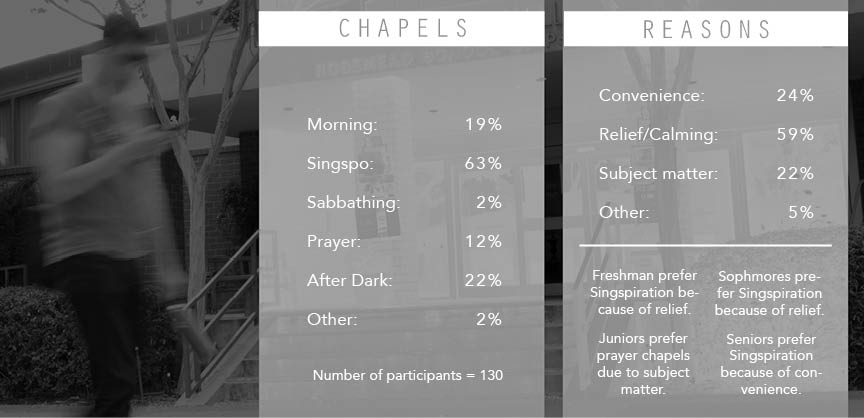Although many students returned and the incoming class is equal in size to last year’s, Biola enrolled 134 fewer students.
Increased Graduation Rate
In fall 2015, 4,225 undergraduate students were enrolled, and 4,091 undergraduate students were enrolled for fall 2016 as of Sept. 13, according to Greg Vaughan, vice president of enrollment management. The incoming class came in at 1,194, in comparison to 1,200 last year. However, the bigger drop in enrollment overall occurred due to a larger number of students graduating than expected last year.
In the last four years, 45 percent of seniors — those who start the fall semester with 88 credits or more — graduated by the following May. Last year, the number of seniors who graduated in this time rose to 50 percent, according to Vaughan.
“That caught us a little bit by surprise… I think that actually contributed a little bit to our enrollment decline because more students graduated than we anticipated,” Vaughan said. “And I think it just says that students are using online courses and even their summers, interterm, they’re… doing what it takes to get out faster, perhaps to reduce the cost… So that’s a good thing, we want students to be able to graduate in the time that they want, but that did impact our enrollment a little bit this year.”
Unexpected Drop of Seniors
While the large divisions of the institution are affected with the unexpected drop of seniors, organizations like the Student Government Association receive little to no effect because their numbers are planned on number projections per semester on the entire undergraduate population, not on incoming freshmen each year.
“We don’t track necessarily ‘this is the amount of freshmen and so then we’re [going to] calculate that for this incoming class for four years.’ All we do, we don’t really grade specify anything, we just get our projections nearing the end or slash beginning of the next semester and use that as our number. So, we don’t project that far in advance,” said Brandon Berz, SGA vice president of finance, technology and HR.
Budget Cuts
However, with the overall decline in enrollment, the institution as a whole and SGA, among a host of other organizations on-campus, receive less money.
“For the most part, every organization, it’s based on a percentage allocation, so… the bigger the pot the bigger the cut of the percentage is… So, the more students we have enrolled, the more that percentage goes,” Berz said.
In relation to the institution as a whole, each of the seven major departments cut their budgets by around three percent, according to Vaughan. Vaughan cut his budget by not filling open positions for a few months.
“You just find ways to do it that least impacts your operation and we’ve all been pretty much able to do that,” Vaughan said. “I can’t speak for every budget manager at the university, but I’m pretty sure that we were able to make cuts that you know makes things tighter, gives you less flexibility in terms of the work you’re doing, but in terms of direct impact on the students I really don’t think that was necessary.”







